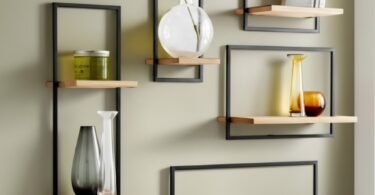Why We’ve Been Sleeping on Fountain Magic
You know what’s funny? I’ve walked past countless fountains in my life, barely giving them a second glance. We treat them like street furniture, don’t we? Just another thing taking up space in our world. But here’s the thing that changed my perspective completely: fountains aren’t just decorative afterthoughts. They’re absolute game changers for any space, and most of us have no clue what we’re missing.
Last summer, I visited my aunt’s house after she’d installed this modest little wall fountain on her patio. The moment I stepped outside, something felt different. The air seemed cooler, the atmosphere more relaxed, and that gentle trickling sound? Pure magic. That’s when I realized we’ve been seriously underestimating these water features.
Indoor fountains work wonders in ways you might not expect. Picture this: you walk into your living room after a brutal day at work, and instead of dead silence or the hum of electronics, you hear water gently cascading down a beautiful stone surface. Your stress levels drop instantly. I’ve seen tiny tabletop fountains transform cramped apartments into peaceful retreats. Wall-mounted versions can turn boring hallways into stunning focal points that guests remember long after they leave.
The variety available today blows my mind. We’re talking everything from sleek modern designs that look like they belong in a tech CEO’s office to rustic stone creations that could fool you into thinking you’re in some ancient courtyard. Materials range from polished granite and marble to lightweight resin that won’t break your back during installation. Sizes? You can find something that fits in your palm or covers an entire wall.
Here’s what most people get wrong: they think bigger automatically means better. Not true. I’ve seen massive fountains that overwhelm small spaces, making them feel cramped rather than serene. The secret lies in matching your fountain to your specific space and needs. Got a narrow entryway? A vertical wall fountain might be perfect. Large living room? Maybe consider a freestanding piece that can serve as a room divider.
The outdoor options open up even more possibilities. Garden fountains can completely transform your backyard from a boring patch of grass into your personal sanctuary. I remember helping my neighbor choose between different styles, and we spent hours discussing how water movement affects the overall vibe. Fast-flowing water creates energy and excitement, while gentle trickles promote relaxation and contemplation.
What really gets me excited is how fountains solve problems you didn’t even know you had. That awkward corner in your yard that never looks quite right? Perfect spot for a fountain. The bland exterior wall that faces your neighbor’s bedroom window? A beautiful water feature creates privacy while adding visual interest. Dead space in your entryway? An indoor fountain makes it feel intentional and welcoming.
Exterior Wall Fountains: Your Secret Weapon for Outdoor Style
Let me tell you about exterior wall fountains, because these beauties are seriously underrated. I used to think they were just for fancy restaurants or upscale hotels, but boy, was I wrong. These features can turn any boring outdoor wall into a stunning focal point that makes your neighbors wonder if you hired some expensive landscape designer.
The installation possibilities are endless, and that’s what makes them so appealing. Deck railings, privacy fences, retaining walls, even the plain siding on your house can become the backdrop for something spectacular. I watched my friend transform his bland back patio by mounting a copper fountain on the wall facing his seating area. The transformation was incredible, and guests now gravitate toward that space like moths to a flame.
Summer houses and cabins benefit tremendously from wall fountains. There’s something about the combination of natural settings and flowing water that just works. The sound masks traffic noise from nearby roads, creates a cooling effect on hot days, and provides a focal point for evening gatherings. I’ve noticed that conversations become more relaxed and intimate when there’s gentle water movement nearby.
Stone walls make perfect candidates for fountain installations. The natural texture complements flowing water beautifully, creating an organic look that feels like it’s always been there. Brick surfaces work wonderfully too, offering that classic, timeless appeal that never goes out of style. Even modern vinyl or metal fencing can be enhanced with the right fountain choice.
The benefits extend far beyond pure aesthetics. Wall fountains create microclimates that make outdoor spaces more comfortable. The evaporation process naturally cools surrounding air, making your patio or deck more enjoyable during warm weather. This cooling effect can reduce your reliance on air conditioning for covered outdoor areas, which your electricity bill will definitely appreciate.
Privacy is another huge advantage that people often overlook. The sound of flowing water masks conversations, making your outdoor space feel more secluded even when neighbors are nearby. I’ve seen couples install wall fountains specifically to create more intimate dining areas or quiet spots for morning coffee. The psychological effect is remarkable: that water sound creates a sense of separation from the outside world.
Maintenance concerns often hold people back from wall fountain purchases, but modern designs have addressed most traditional problems. Many newer models use recirculating pumps that require minimal water additions. Self-contained systems mean you don’t need complex plumbing or electrical work. Some even come with automatic shut-off features that protect the pump if water levels drop too low.
The decorative impact goes way beyond the fountain itself. Water features attract birds, butterflies, and other wildlife, turning your outdoor space into a mini nature preserve. I’ve watched cardinals and blue jays visit my neighbor’s wall fountain daily, creating an ongoing nature show that’s better than anything on television. Kids love watching the wildlife too, making these fountains great family features.

The Zen Factor: How Fountains Transform Your Mental State
Here’s something most people don’t realize about fountains: they’re basically meditation machines disguised as decorations. The science behind this is fascinating, and once you understand it, you’ll never look at water features the same way again. We’re hardwired to find flowing water soothing, probably because our ancestors depended on streams and rivers for survival. That genetic memory still influences how we respond to water sounds today.
I started paying attention to this after installing a small fountain in my home office. Within a week, I noticed my stress levels during work calls had dropped significantly. The gentle bubbling sound somehow made even difficult conversations feel more manageable. Coworkers started commenting that I seemed more relaxed during video meetings, and I realized the fountain was working its magic even through my computer speakers.
The peacefulness factor is real, but it goes deeper than just pleasant sounds. Moving water creates negative ions, which some studies suggest can improve mood and mental clarity. While the research is still developing, I can tell you from personal experience that spaces with fountains feel different. The air seems fresher, thoughts flow more easily, and that constant low-level anxiety that most of us carry around seems to fade into the background.
Serenity isn’t just about quieting your mind; it’s about creating space for creativity and problem-solving. I’ve noticed that when I’m stuck on a project, sitting near my fountain often leads to breakthrough moments. Something about that rhythmic water sound helps my brain make connections it might otherwise miss. Writers and artists have known this for centuries, which explains why so many creative spaces feature water elements.
The beauty aspect shouldn’t be underestimated either. Fountains add movement to static spaces in ways that nothing else can match. Unlike artwork or decorations that you stop noticing after a while, moving water continues to capture attention and provide visual interest. Light plays across the water surface differently throughout the day, creating an ever-changing display that keeps spaces feeling fresh and alive.
Drama is another element that fountains bring to outdoor spaces. A well-placed fountain can serve as a stunning centerpiece that draws the eye and creates conversation. I’ve seen simple backyards transformed into sophisticated outdoor rooms just by adding the right water feature. The key is choosing something that complements your existing style rather than overwhelming it.
Gardens and courtyards benefit tremendously from the focal points that fountains provide. Without a central element, these spaces can feel scattered or incomplete. A fountain anchors the design and gives visitors a natural gathering point. I’ve noticed that parties tend to center around fountain areas, with people naturally drawn to the combination of sound, movement, and cooling effects.
The cooling benefits deserve special mention because they’re often overlooked. Fountains don’t just create psychological coolness; they actually lower surrounding temperatures through evaporation. This microclimate effect can make outdoor entertaining more comfortable and extend the usable hours of your patio or garden. On hot summer evenings, the area around a fountain can be several degrees cooler than surrounding spaces.
Exploring Fountain Styles: Finding Your Perfect Match
The variety of fountain styles available today is absolutely mind-blowing, and figuring out which one fits your space can feel overwhelming at first. I remember standing in a fountain showroom, completely paralyzed by all the choices. The salesperson kept throwing around terms like “tiered” and “spillway” while I tried to figure out what would actually work in my backyard. That’s when I learned that understanding fountain categories makes the selection process much easier.
Every fountain style has what I call its “sweet spot” where it looks most natural and functions best. Modern geometric fountains shine in contemporary settings with clean lines and minimal landscaping. Traditional tiered designs work beautifully in formal gardens or classic architectural settings. Rustic boulder fountains blend seamlessly into naturalistic landscapes or country-style properties.
The splash factor varies dramatically between styles, and this matters more than most people realize. High-spray fountains create exciting visual displays but can drench nearby seating areas on windy days. I learned this lesson the hard way when my first fountain choice soaked my patio furniture every time the breeze picked up. Gentle cascade styles provide movement and sound without the spray issues, making them better choices for areas where people gather.
Understanding the two main categories helps narrow down your options significantly. The distinction between pedestal and basin fountains isn’t just technical jargon; it affects everything from installation requirements to maintenance needs. Each type has specific advantages and limitations that can make or break your fountain experience.
Pedestal fountains offer height and presence that basin models can’t match. They create vertical interest in flat landscapes and can be seen from greater distances. The elevated water display catches light beautifully and creates more dramatic sound effects as water falls from greater heights. These fountains work particularly well as focal points in large yards or formal garden settings.
Basin fountains, on the other hand, provide ground-level water access that wildlife absolutely loves. Birds can drink and bathe safely, creating natural entertainment that adds life to your outdoor space. Children find these fountains less intimidating and more interactive. The lower profile makes them less dominant in small spaces while still providing all the benefits of flowing water.
Size considerations go beyond just physical dimensions. A fountain needs to match the scale of its surroundings to look proportional and natural. I’ve seen tiny fountains lost in vast courtyards and enormous features that overwhelm intimate garden spaces. The rule of thumb is that your fountain should be large enough to be noticed but not so big that it dominates everything else.
Maintenance requirements vary significantly between styles, and this affects long-term satisfaction more than most people anticipate. Simple bowl designs are generally easier to clean and maintain than complex multi-tiered systems. Smooth surfaces resist algae growth better than textured ones. Self-contained recirculating systems require less ongoing attention than fountains connected to pond systems or complex plumbing.

Pedestal Fountains: The Art of Vertical Water Features
Pedestal fountains are the aristocrats of the water feature world, and once you understand how to use them properly, they can absolutely transform your outdoor space. These elevated beauties require specific installation considerations that many people overlook, which often leads to problems down the road. I’ve seen too many gorgeous fountains fail because someone skipped the foundation work or ignored drainage requirements.
The structural support requirements for pedestal fountains are non-negotiable. These features are heavy when empty and become significantly heavier when filled with water. Add the constant vibration from pump operation, and you’ve got serious forces at work. The foundation needs to handle not just the weight but also the dynamic stresses that develop over time.
Solid surfaces are absolutely necessary for pedestal fountain installations. Concrete pads, stone patios, and brick pavers can provide the stable base these fountains demand. I watched a neighbor try to install a beautiful tiered fountain on a wooden deck without proper reinforcement, and the results were predictably disastrous. The deck started sagging within months, and the fountain developed a permanent lean that ruined its appearance.
The reason most pedestal fountains are hollow inside isn’t just about weight reduction, though that’s certainly a factor. The hollow design allows for pump and plumbing installation while keeping costs manageable. Solid stone fountains would be prohibitively expensive and nearly impossible to move or install. The hollow design also provides better freeze protection in climates where winter temperatures drop below freezing.
Ground stability becomes even more important when you consider environmental factors. Rain and sprinkler systems can saturate soil, causing settling or shifting that affects fountain alignment. I’ve seen perfectly level installations become crooked after a particularly wet spring, with the fountain tilting just enough to affect water flow patterns and overall appearance.
Drainage around the foundation area deserves serious attention during planning. Standing water around the base can cause frost damage in winter and creates muddy conditions that make maintenance difficult. French drains or gravel beds around the fountain area help manage water runoff and protect your investment long-term.
The visual impact of properly installed pedestal fountains is remarkable. The height creates presence that ground-level features can’t match, making them visible from multiple angles and distances. This elevated position allows the fountain to serve as a true focal point that anchors garden designs and provides reference points for other landscape elements.
Lighting considerations become more important with pedestal fountains because of their prominence in the landscape. Underwater lights, uplighting, or accent lighting can turn these features into stunning nighttime displays. I’ve seen fountains that look modest during the day become absolutely magical after dark with proper lighting design.
Wind effects need consideration because elevated water features are more susceptible to spray and evaporation issues. Sheltered locations or windscreen plantings can help protect both the fountain and surrounding areas from excessive water loss and spray problems. This is particularly important in windy climates or exposed locations.

Basin Fountains: Ground-Level Grace and Accessibility
Basin fountains represent a completely different approach to water features, and they offer advantages that elevated designs simply can’t match. These ground-level beauties excel in areas where pedestrian interaction is desired or where a more subtle water presence fits better with the overall design aesthetic. I’ve found that basin fountains often surprise people with their versatility and functionality.
The installation requirements for basin fountains are generally more forgiving than pedestal types, but they still demand attention to detail. Level surfaces remain important, but the tolerances are typically less stringent. Soft surfaces like soil or gravel can work well, provided they’re properly prepared and stabilized. This flexibility opens up installation possibilities in naturalistic settings where concrete pads might look out of place.
Surface preparation becomes the key to long-term success with basin fountains. The area needs to be excavated to the proper depth, leveled carefully, and stabilized with appropriate base materials. Sand or fine gravel work well for leveling, while landscape fabric helps prevent weeds and settling issues. I’ve learned that spending extra time on preparation prevents most problems that develop later.
Drainage considerations are actually more complex with basin fountains than with elevated types. Water that splashes out of the basin needs somewhere to go, and standing water around the fountain creates maintenance problems and potential safety hazards. Proper grading and drainage channels help direct overflow away from high-traffic areas and prevent waterlogged conditions.
The accessibility factor makes basin fountains particularly appealing for families with children or for those who want to attract wildlife. Kids love the interaction possibilities, from floating toy boats to simple hand play in the water. Birds appreciate the safe drinking and bathing opportunities, creating natural entertainment that adds life and movement to your outdoor space.
Heavy surface installations require special attention to prevent settling and shifting. The weight distribution of basin fountains is different from pedestal types, creating point loads that can cause problems on inadequate foundations. Adding reinforcement such as concrete footings or expanded base pads helps distribute weight more evenly and prevents long-term stability issues.
Leveling becomes absolutely critical with basin fountains because even small variations affect water flow and appearance. Unlike elevated fountains where slight imperfections might not be immediately obvious, basin fountains display every flaw in their installation. Water will always find the low spots, creating uneven flow patterns that look unprofessional and can cause operational problems.
Ground contact makes basin fountains more susceptible to debris accumulation and seasonal maintenance challenges. Leaves, dirt, and organic matter naturally collect in ground-level water features. Regular cleaning schedules become more important, and access for maintenance needs to be considered during the initial installation planning.
The security advantages of basin fountains shouldn’t be overlooked. The lower profile makes them less attractive to vandals and reduces the risk of damage from severe weather events. High winds that might damage elevated fountains often have minimal impact on ground-level installations.
Winter protection strategies differ significantly for basin fountains. Drainage and storage procedures need to account for the ground-level installation and potential freeze damage. Some basin fountains can be left in place with proper winterization, while others benefit from seasonal removal and storage.

Variety and Selection: Making the Right Choice for Your Space
The fountain market today offers such an incredible range of options that making a decision can feel overwhelming, but that variety is actually your greatest advantage. I’ve learned that the key to satisfaction lies in understanding how different fountain characteristics affect daily life in your space. Surface materials, size relationships, and functional features all play roles in determining whether you’ll love your fountain for years or regret the purchase within months.
Water feature materials have evolved far beyond the traditional stone and concrete options that dominated the market for decades. Modern composites offer the appearance of natural materials with improved durability and reduced weight. Fiberglass fountains can mimic carved stone or cast metal at a fraction of the cost and weight. Stainless steel and copper options provide contemporary styling that complements modern architecture beautifully.
The size relationship between your fountain and its surroundings affects not just appearance but also functionality and maintenance requirements. Oversized fountains can overwhelm small spaces and create ongoing maintenance burdens that become tedious over time. Undersized features often get lost in large areas and fail to provide the sound masking or visual impact that motivated the original purchase.
Shape considerations extend beyond pure aesthetics to affect water flow patterns, spray characteristics, and cleaning requirements. Smooth, curved surfaces are generally easier to maintain than complex angular designs with multiple crevices where debris can accumulate. Simple bowl shapes provide reliable water circulation, while elaborate multi-level designs may develop flow problems over time.
Installation complexity varies dramatically between fountain types, and this affects both initial costs and long-term satisfaction. Self-contained units that simply require electrical connections appeal to DIY enthusiasts and reduce installation expenses. Custom installations that require plumbing modifications, concrete work, or landscape alterations can quickly become expensive and complicated projects.
Pump and filtration systems have improved significantly in recent years, making fountain ownership much more manageable than it used to be. Variable-speed pumps allow you to adjust water flow for different occasions or seasons. Built-in filtration systems reduce maintenance requirements and improve water clarity. Automatic water level sensors can protect pumps from damage if evaporation reduces water levels too much.
Energy efficiency has become an important consideration as utility costs continue rising. LED lighting systems use a fraction of the power required by traditional fountain lighting while providing better color options and longer service life. High-efficiency pumps reduce operating costs significantly over the fountain’s lifetime. Solar-powered options eliminate electrical connections entirely for smaller fountains.
Sound characteristics vary more than most people expect between similar-looking fountains. Water dropping from different heights creates different sound profiles, from gentle trickling to more pronounced splashing. The basin shape and depth affect sound resonance and volume. Understanding these differences helps you choose a fountain that provides the audio experience you’re seeking.
Weather resistance becomes particularly important for outdoor installations in challenging climates. Freeze-thaw cycles can damage fountains that aren’t designed for cold weather conditions. UV exposure can fade or degrade certain materials over time. Wind resistance affects both the fountain structure and water spray patterns.
Customization options allow you to adapt standard fountain designs to your specific needs and preferences. Many manufacturers offer different finish options, pump sizes, lighting packages, and accessory choices. Some provide modification services that can alter dimensions or features to better fit particular installations. Understanding available customization options helps you get exactly what you want rather than settling for something close.








Leave a Comment